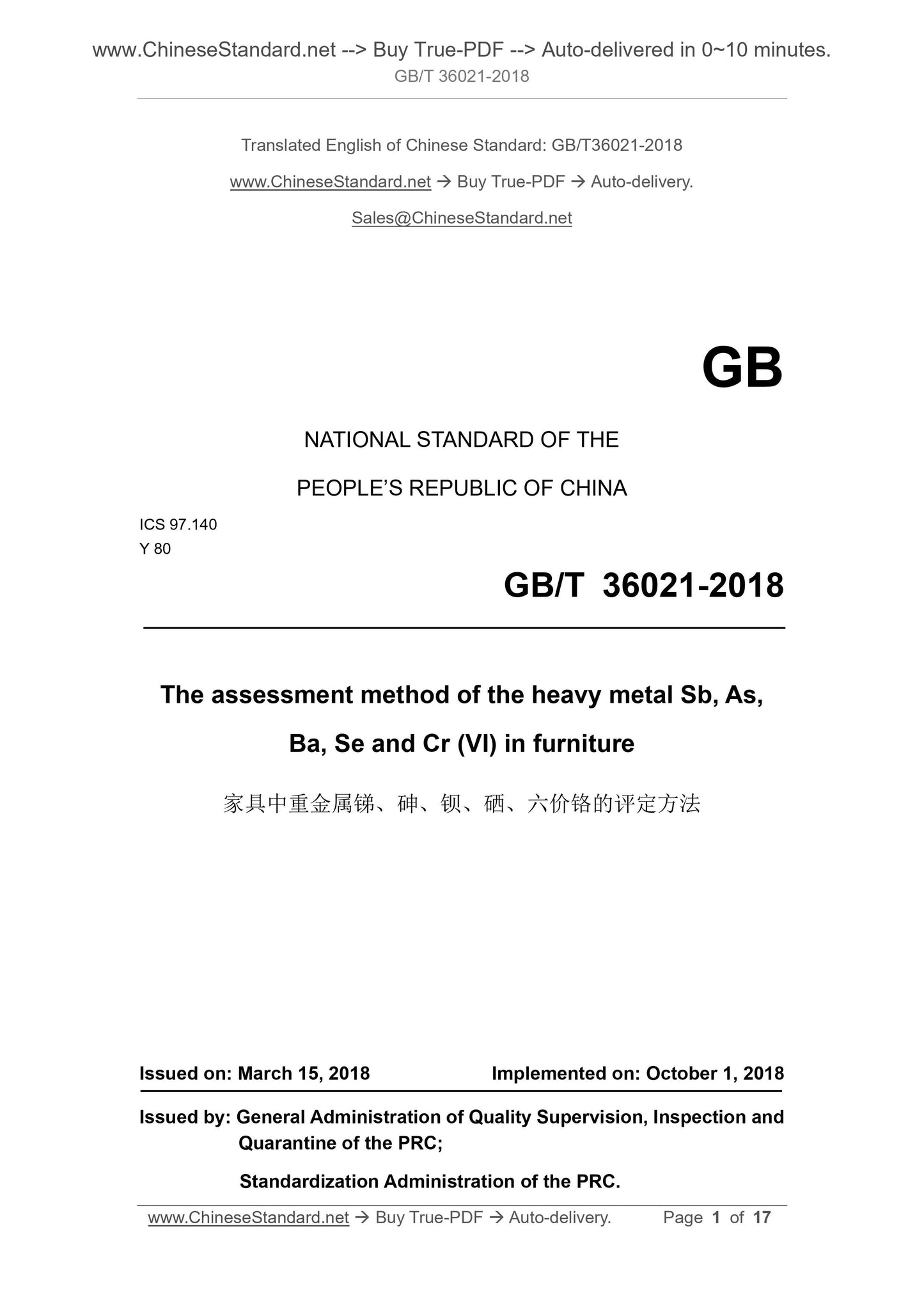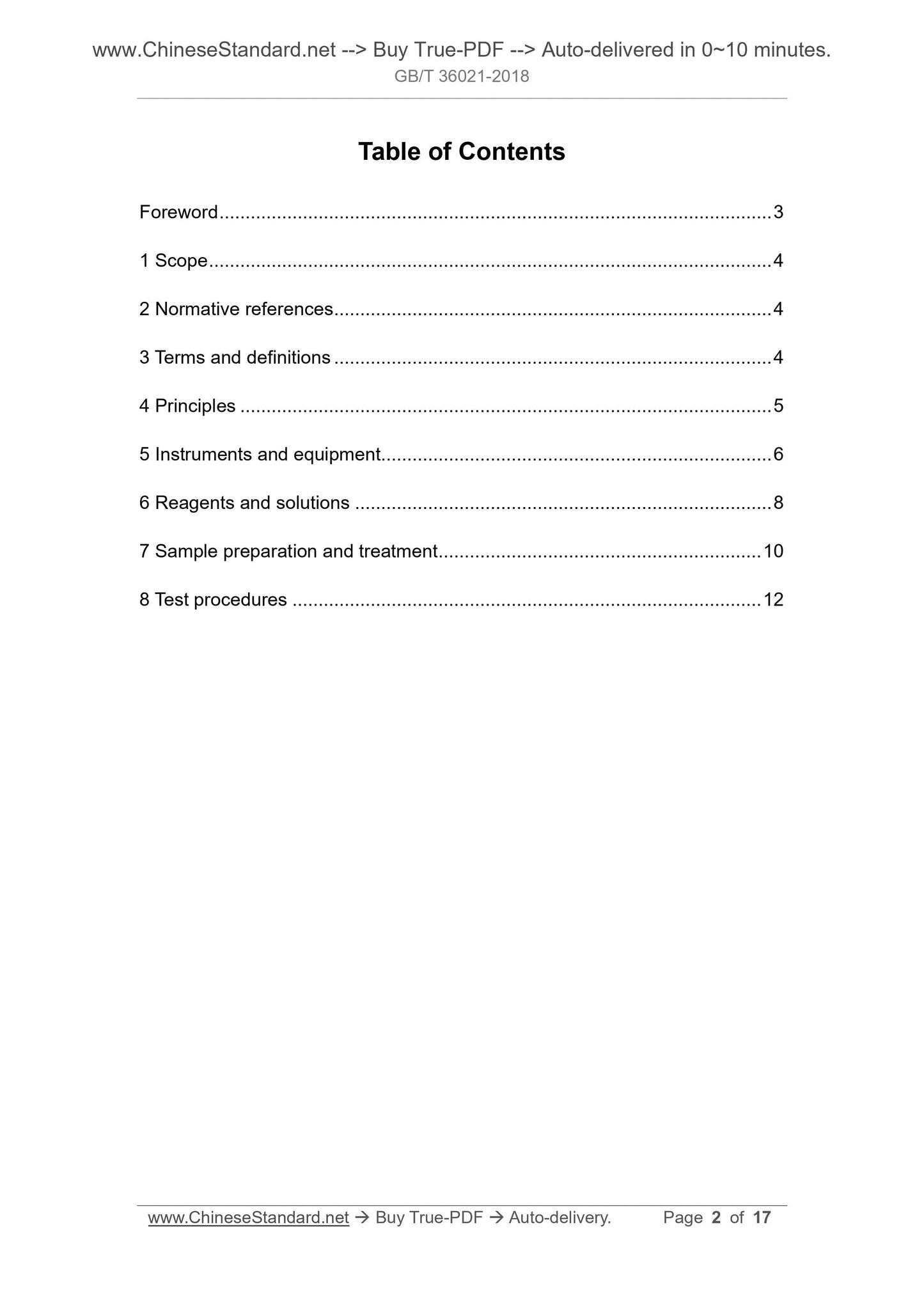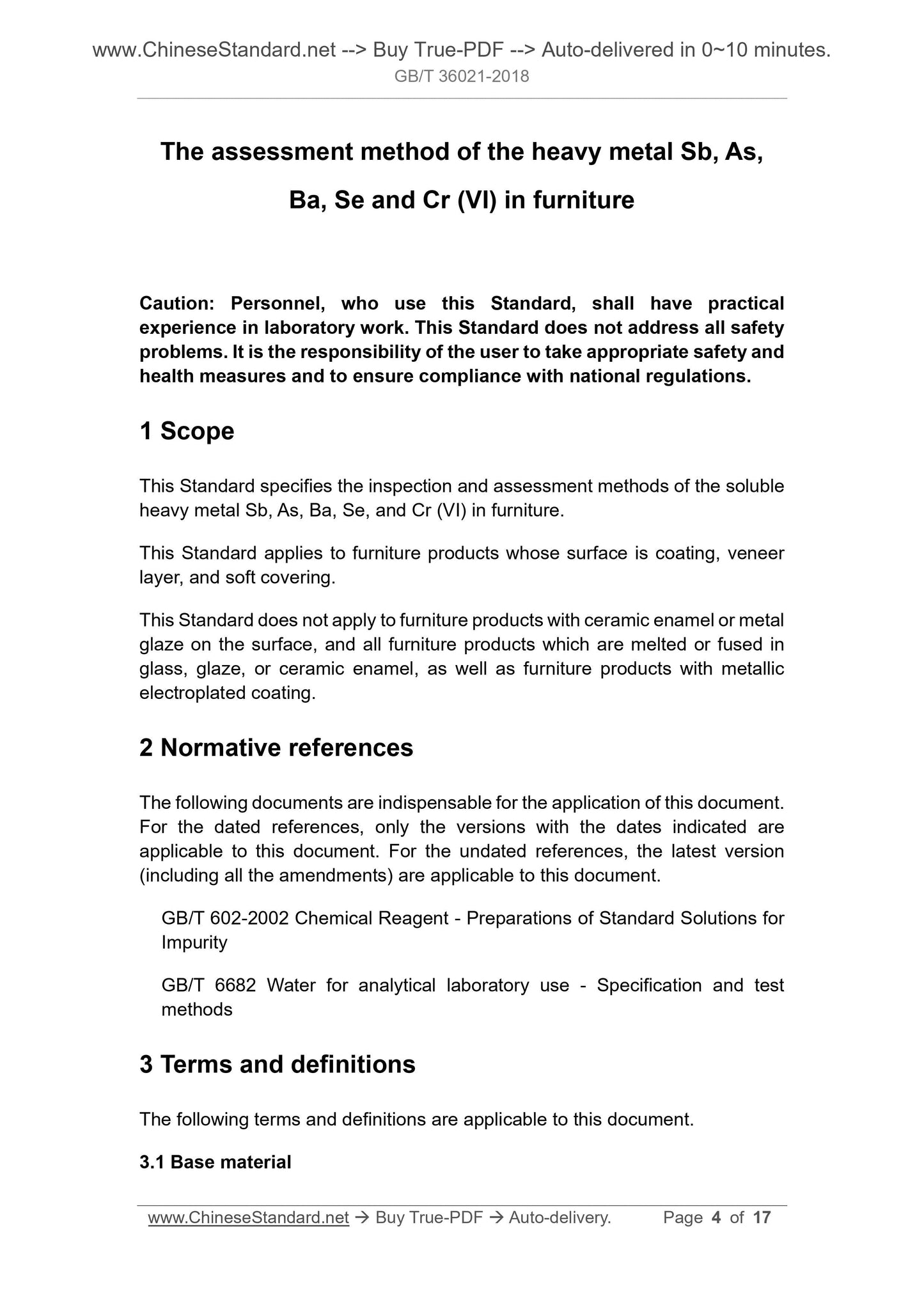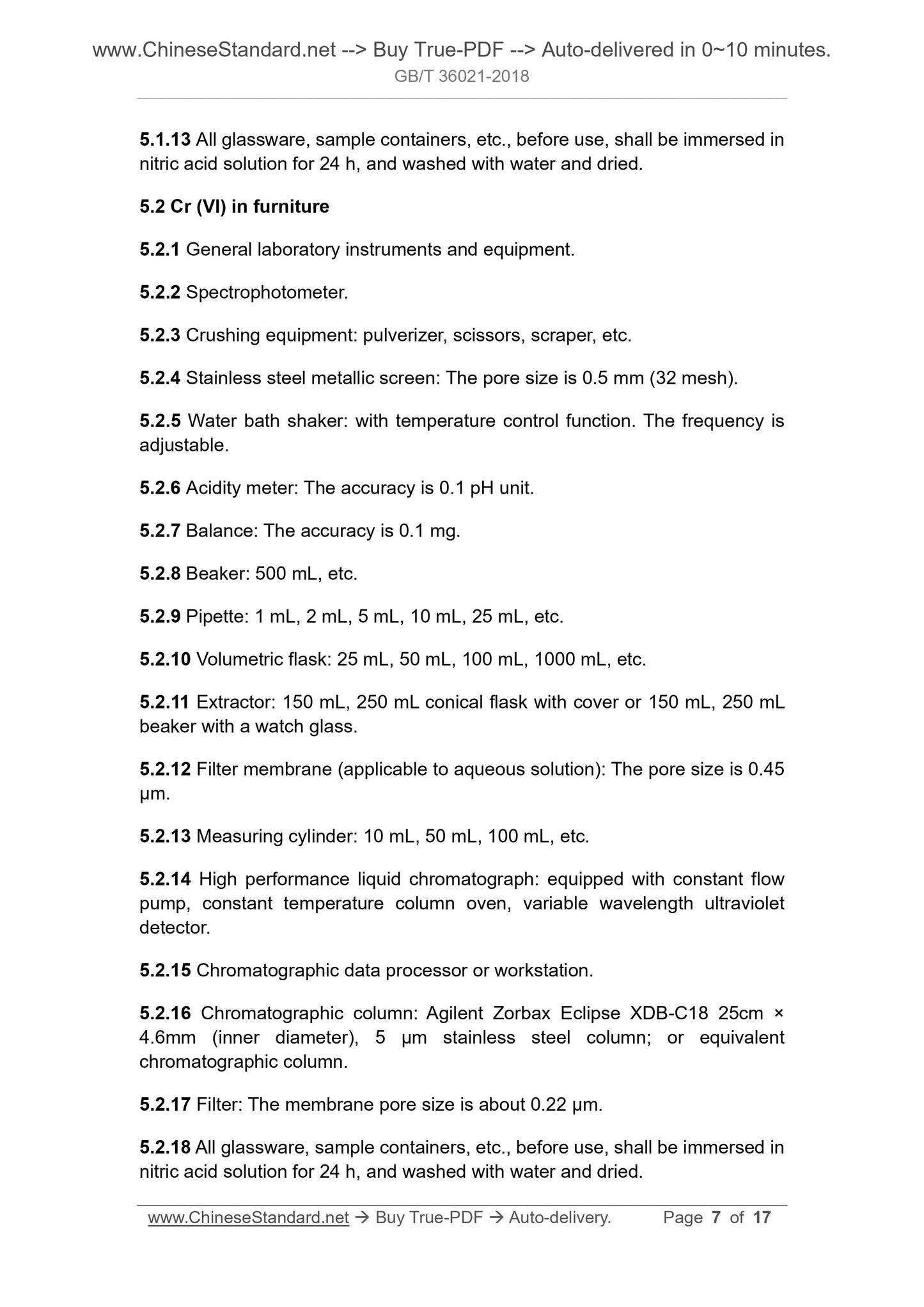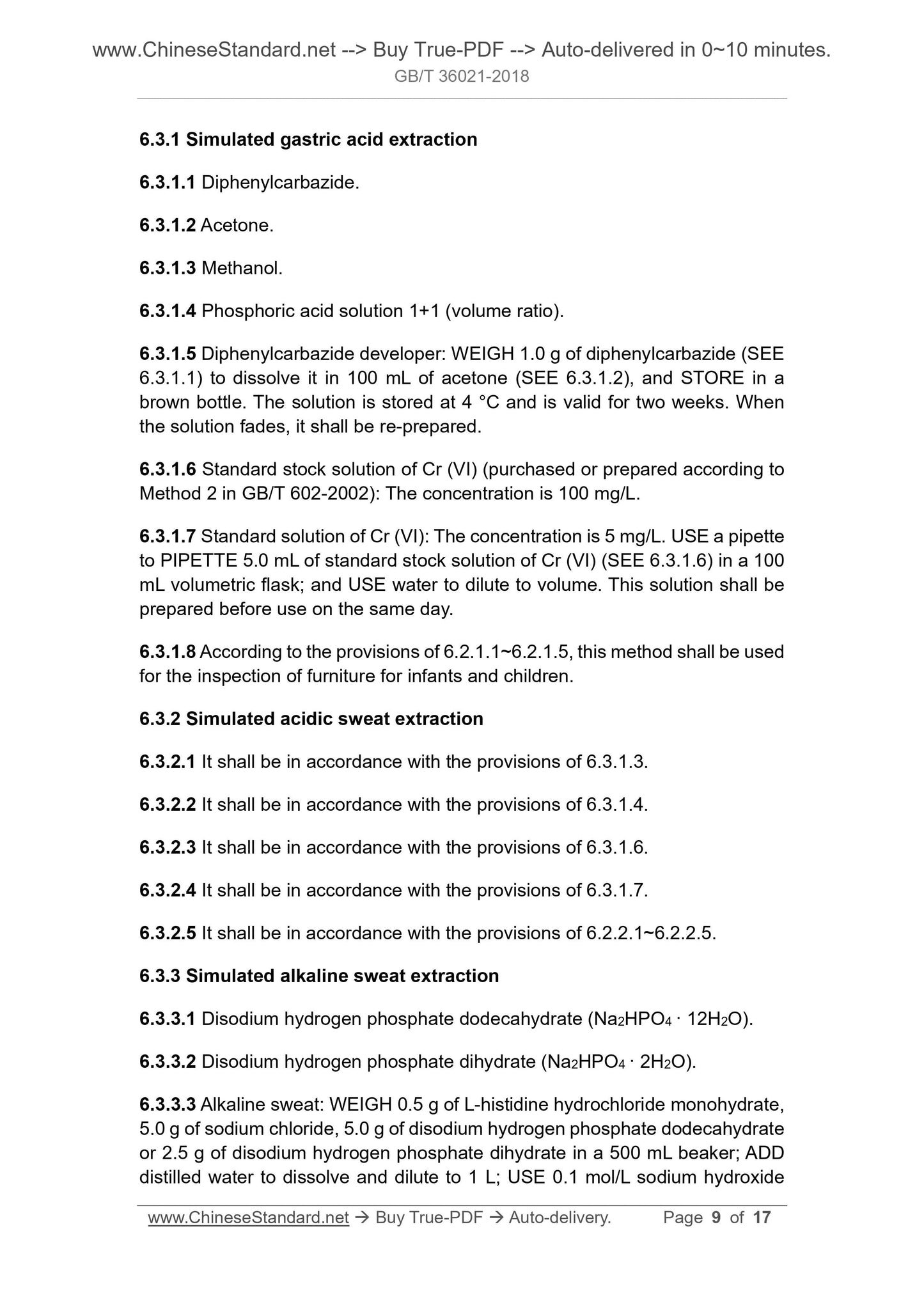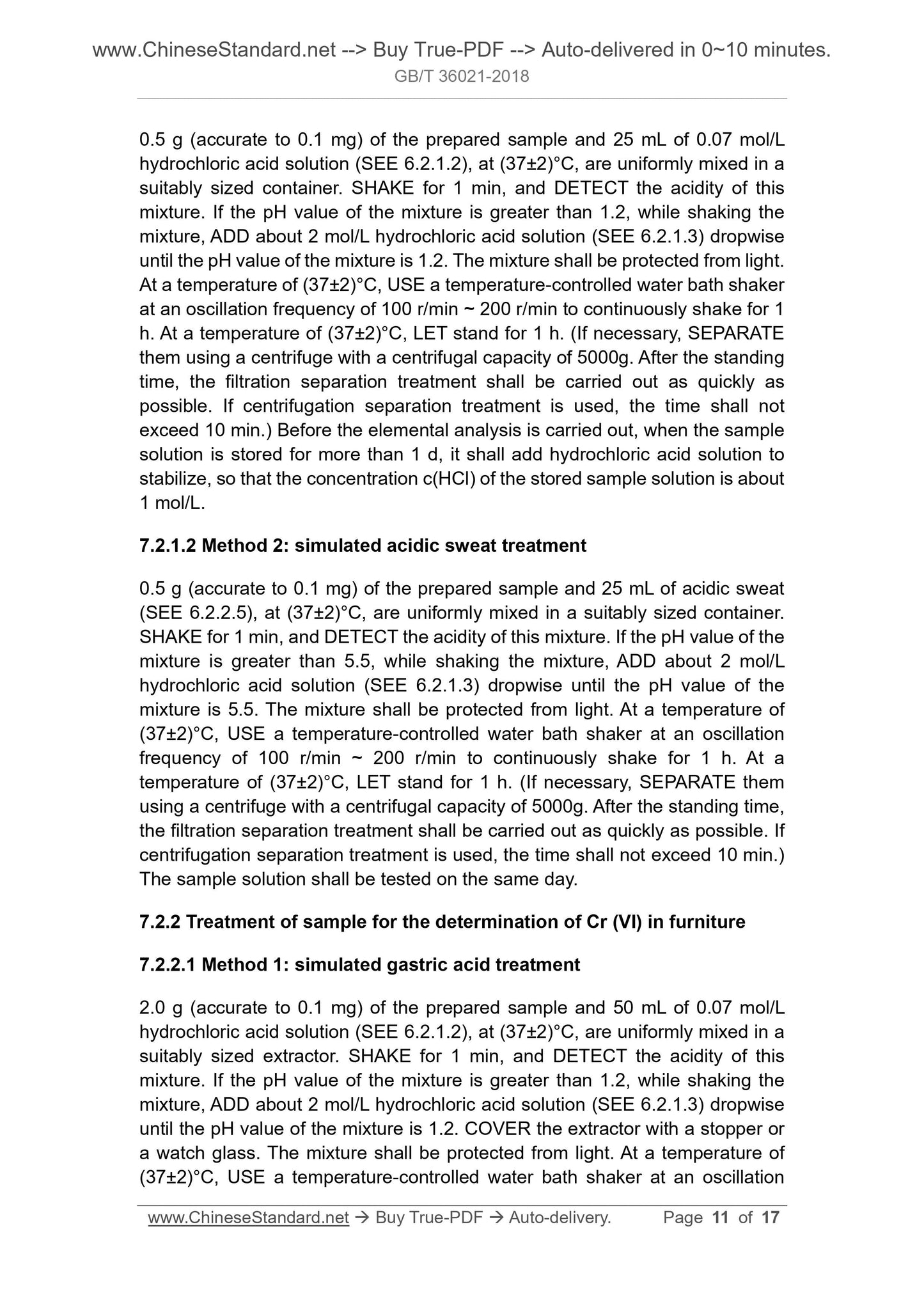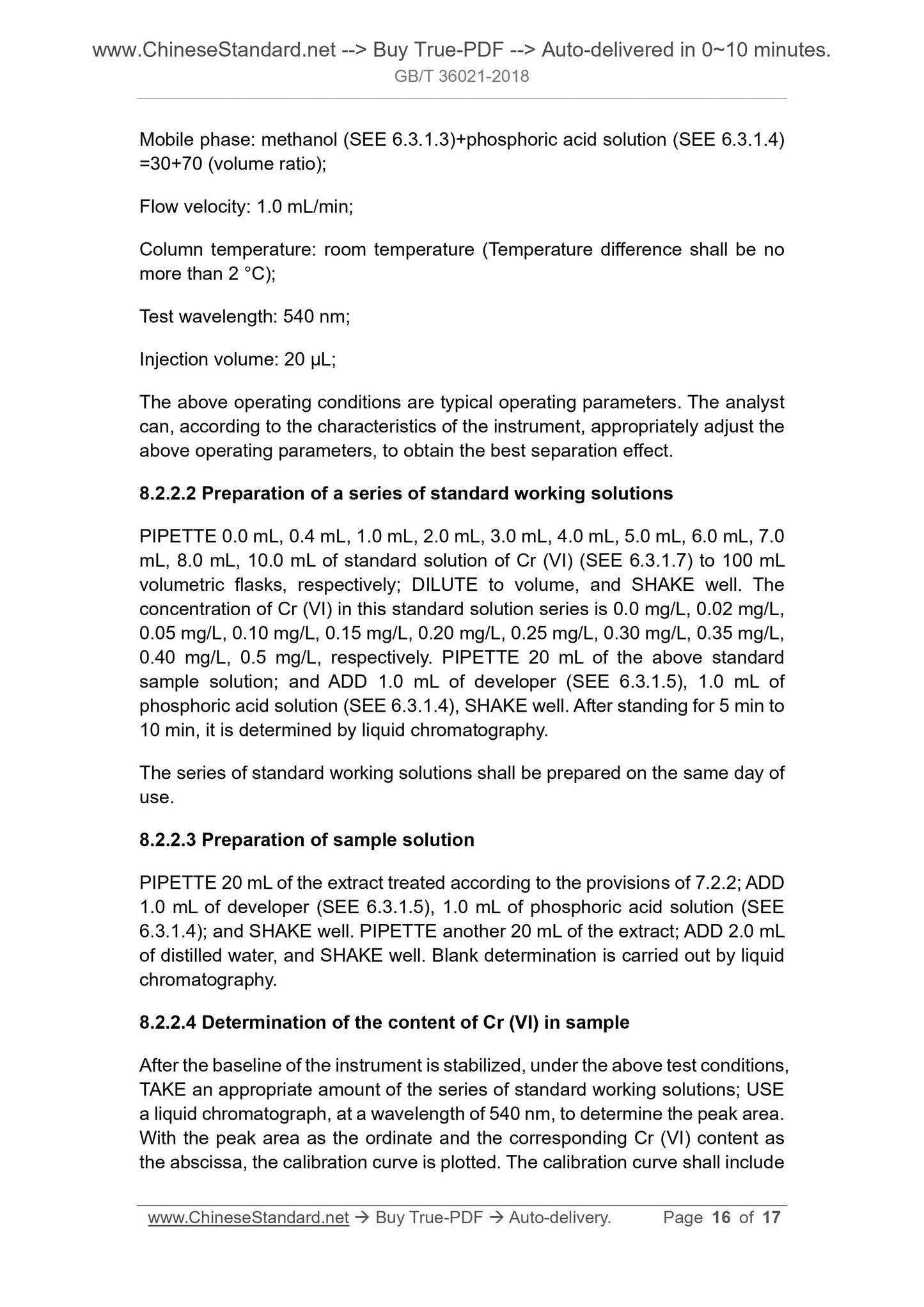1
/
of
7
www.ChineseStandard.us -- Field Test Asia Pte. Ltd.
GB/T 36021-2018 English PDF (GB/T36021-2018)
GB/T 36021-2018 English PDF (GB/T36021-2018)
Regular price
$135.00
Regular price
Sale price
$135.00
Unit price
/
per
Shipping calculated at checkout.
Couldn't load pickup availability
GB/T 36021-2018: The assessment method of the heavy metal Sb, As, Ba, Se and Cr (VI) in furniture
Delivery: 9 seconds. Download (and Email) true-PDF + Invoice.Get Quotation: Click GB/T 36021-2018 (Self-service in 1-minute)
Newer / historical versions: GB/T 36021-2018
Preview True-PDF
Scope
This Standard specifies the inspection and assessment methods of the solubleheavy metal Sb, As, Ba, Se, and Cr (VI) in furniture.
This Standard applies to furniture products whose surface is coating, veneer
layer, and soft covering.
This Standard does not apply to furniture products with ceramic enamel or metal
glaze on the surface, and all furniture products which are melted or fused in
glass, glaze, or ceramic enamel, as well as furniture products with metallic
electroplated coating.
Basic Data
| Standard ID | GB/T 36021-2018 (GB/T36021-2018) |
| Description (Translated English) | The assessment method of the heavy metal Sb, As, Ba, Se and Cr (VI) in furniture |
| Sector / Industry | National Standard (Recommended) |
| Classification of Chinese Standard | Y80 |
| Classification of International Standard | 97.140 |
| Word Count Estimation | 14,150 |
| Date of Issue | 2018-03-15 |
| Date of Implementation | 2018-10-01 |
| Issuing agency(ies) | State Administration for Market Regulation, China National Standardization Administration |
Share
